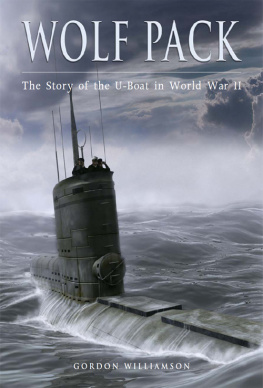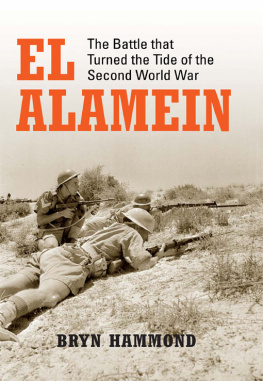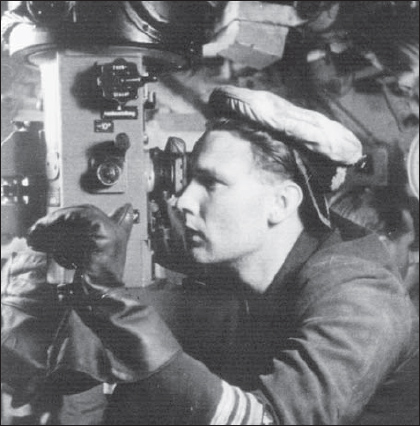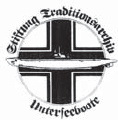WOLF PACK
The Story of the U-Boat in World War II
GORDON WILLIAMSON
The Author
Gordon Williamson was born in 1951 and currently works for the Scottish Land Register. He spent seven years with the Military Police TA and has published a number of books and articles on the German forces of World War II.
He has long been fascinated by the U-boat world and has spent many years researching the men and craft that formed this elite fleet.
CONTENTS
ACKNOWLEDGEMENTS
This book and those individual volumes that preceded it would not have been possible without the gracious assistance of Horst Bredow, founder of the U-Boot Archiv. Herr Bredow has been a most gracious host on my visits to Cuxhaven, allowing me not only access to the Archiv, but to reside in the Archiv building during my trips. He has provided much help and encouragement and has made available the photographic collection of the Archiv for use in this work. The Archiv is the worlds foremost repository of information and photographs on the subject not only of the U-boats of the Kriegsmarine but also of their forerunners in the Kaiserliche Marine of Imperial Germany.
Noted U-boat historian Jak P. Mallmann-Showell has also offered his encouragement and help in correcting and revising material for this and other related projects.
I would also like to express my grateful thanks to the following individuals for their assistance with this project: Chris Boonzaier, Malcolm Bowers, Josef Charita, Thomas Huss, Michel Legrand, Kevin Matthews, Detlev Niemann, Franois Saez and Mark Wood.
The U-Boot Archiv
The majority of photographs in this book were kindly provided by Horst Bredow, founder and director of the U-Boot Archiv in Cuxhaven-Altenbruch.
A former U-boat officer who served on U-288, Herr Bredow was spared the fate of his crew-mates when he was sent to hospital for treatment of wounds and missed the last sailing of his boat, which was lost with all hands during an attack on Convoy JW58 on 3 April 1944.
Herr Bredow has dedicated his life to researching the fates of all of Germanys U-boats and in the process has assembled the worlds finest archival collection of photographs, documents and historical artefacts relating to the U-boats, not only of the Kriegsmarine, but also of their predecessors of the Imperial Navy of the Kaisers day.
Maintaining and expanding this wonderful collection is a major undertaking. The Archiv receives no official funding and is a registered charity depending on donations from visitors and those who use its research facilities. For further details, contact Horst Bredow, U-Boot Archiv, Bahnhofstrasse 57, 27478 Cuxhaven Altenbruch, Germany, enclosing two International Reply Coupons.
To support the Archiv, membership is available for the Freundeskreis Traditionsarchiv Unterseeboote e.V, or FTU (the Circle of Friends of the U-boat Archive). An annual subscription allows members the use of Archiv research facilities at preferential rates as well as a substantial yearbook containing specially selected material on the U-boat war not generally or easily available elsewhere.
Readers interested in supporting this worthy cause can obtain further information from: Jak P. Mallmann-Showell, 3 Sandpiper Road, Hawkinge, Folkestone, Kent CT18 7TA, UK. Please include an SAE if in the UK, or if outside the UK, two International Reply Coupons.
INTRODUCTION
Few forms of combat in modern history have grabbed the imagination of the public to the degree that has been the case with submarine warfare. There is, to many, something innately sinister about any weapon which can operate unseen and whose arrival is first heralded by a huge explosion and eruption of flame as the victim it has been stalking is sent plunging into the depths.
The German submariner has, in popular Western culture, usually been portrayed as some sort of Nazi fanatic, revelling not only in the destruction of enemy ships, but also in the death of their crews. The reality of course was somewhat different. The German Navy was fiercely traditional and made every effort to ensure that it remained as free as possible from political interference. For a long time, membership of any political party was frowned upon, even after the Nazis came to power. The Commander-in-Chief U-Boats, Karl Dnitz, who of course ultimately became the commander-in-chief of the entire navy, made strenuous efforts to ensure that so-called National Socialist Leadership Officers, somewhat analogous to the political commissars employed by the Soviets, were kept well away from the U-boats.
Many of those military formations throughout history that have become perceived as elite have held a fascination for those with an interest in military matters. The German Armed Forces of World War II have many such formations, the fighter arm of the Luftwaffe, the Fallschirmjger, the Afrikakorps, the Panzerwaffe and the Waffen-SS to name but a few. Of all the branches of the Wehrmacht, however, few were so successful, and came so near to bringing the enemy to its knees, as the Grey Wolves of the U-Bootwaffe under Karl Dnitz.
From the very first day of war to the very last, the U-boats and their crews performed with great distinction. Despite beginning the war with only a fraction of the number of boats intended, Dnitz and his submarines achieved phenomenal results.
The German U-boat designs were immensely successful. They were relatively small in comparison with some of the Allied models. Despite the intensely uncomfortable conditions and privations suffered by the crews, the Type VII which formed the backbone of the U-boat fleet was responsible for sinking more ships than all of the Allied types put together. The larger Type IX boats had immense range and roamed from German waters all the way to the Far East, operating from bases controlled by the Imperial Japanese Navy. In the second half of the war, the technical innovations incorporated into the Type XXI, Type XXIII and the so-called Walter boats were years ahead of their time, and although too late to affect the course of the war at sea, directly influenced much of post-war submarine development.
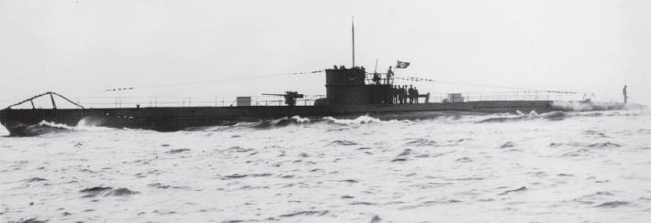
As can be seen in this 1940 photograph of U-551, a Type VIIB, although the net cutters were removed from many boats by the outbreak of war, a few carried them for much longer, though they were rarely required to fulfil their original purpose.
The Germans were world leaders not only in constructing these boats, but also in building the special protective bunkers to house them in occupied ports. The great bunkers erected in occupied France in particular were to prove virtually impregnable to attack. Even the massive bunker-busting Tallboy bombs developed specially for use against such targets could inflict only superficial damage on these massive structures. So strong were they that the cost of demolishing them after the war was seen as prohibitive and many of them stand to this day, testament to the abilities of their German constructors.
In many ways, the U-Bootwaffe was unique amongst German military formations. Its level of success was achieved despite fighting its war in a manner which was acknowledged even by its enemies as far cleaner than the manner in which they themselves had fought. Apart from the solitary incident involving the killing of the survivors of the

